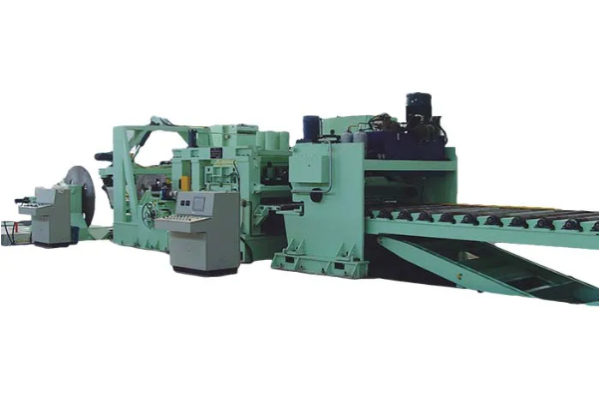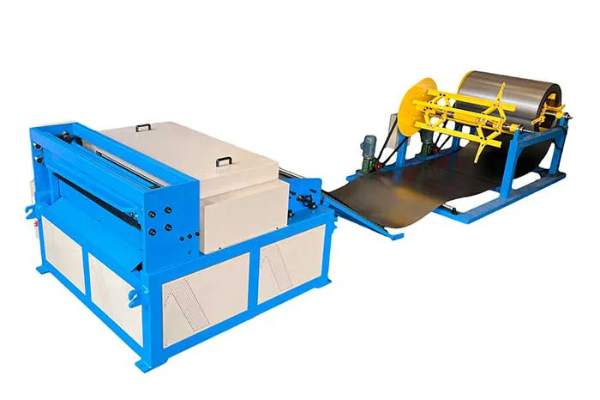
Duct Fabrication Machines vs. Traditional Methods- Pros and Cons
- By:Metmac
- 2024-08-13
- 110
In the realm of HVAC system construction, the fabrication of ducts, responsible for directing and distributing conditioned air, plays a pivotal role. Traditionally, this process involved manual labor, relying on skilled craftspeople to cut, shape, and assemble ductwork using hand tools. However, with technological advancements, duct fabrication machines have emerged as an alternative, promising increased efficiency, accuracy, and cost savings. This article delves into a comprehensive comparison of duct fabrication machines versus traditional methods, highlighting their respective advantages and disadvantages.
Precision and Accuracy
Duct Fabrication Machines:
– Advanced laser cutting and robotic welding technologies enable machines to achieve precise and consistent cuts and welds.
– Automated processes minimize errors and variations, ensuring high-quality results.
– Digital designs and computer-aided manufacturing techniques eliminate manual measurement and cutting, reducing the risk of inaccuracies.
Traditional Methods:
– Manual cutting and assembly are prone to human error, resulting in inconsistencies in duct dimensions and geometry.
– Accuracy often depends on the skill and experience of the craftsperson.
– Time-consuming and labor-intensive processes increase the likelihood of mistakes.
Efficiency and Productivity
Duct Fabrication Machines:
– Automated processes significantly reduce production time.
– Multiple machines can operate simultaneously, increasing overall efficiency.
– Automated tools and assembly lines streamline production, reducing labor requirements.
Traditional Methods:
– Manual labor requires extensive time and effort.
– Production rates are limited by the capacity and skill of individual craftspeople.
– Time-consuming processes, such as cutting, folding, and welding, can delay project timelines.
Material Optimization
Duct Fabrication Machines:
– Advanced software algorithms optimize material usage, minimizing waste and reducing costs.
– Automated nesting techniques maximize material utilization, reducing the requirement for raw materials.
Traditional Methods:
– Manual methods often result in material overages due to imprecise cuts and assembly.
– Excess material can contribute to increased waste and higher expenses.
– Inaccurate material estimation can lead to delays and additional material procurement.
Labor Costs and ROI
Duct Fabrication Machines:
– Automation reduces the need for skilled labor, lowering direct labor expenses.
– Increased efficiency and productivity lead to higher production rates and improved return on investment (ROI).
Traditional Methods:
– Labor-intensive processes require high numbers of skilled craftspeople.
– Hourly wages and benefits contribute significantly to project costs.
– Reduced efficiency may limit ROI compared to automated methods.
Quality Control
Duct Fabrication Machines:
– Automated processes ensure consistent quality and meet industry standards.
– Machine-controlled processes eliminate the variability associated with manual labor.
– Quality control measures are built into the production process, reducing the risk of defective ducts.
Traditional Methods:
– Quality control relies on the judgment and experience of craftspeople.
– Inconsistent quality may occur due to varying skill levels and human error.
– Post-production inspections and rework can be required to meet quality specifications.
Conclusion
The choice between duct fabrication machines and traditional methods depends on the specific project requirements, scale, and available resources. While traditional methods offer flexibility and low upfront costs, duct fabrication machines provide significant advantages in terms of precision, efficiency, material optimization, labor costs, and quality control. For large-scale projects or projects requiring high precision and cost-effectiveness, duct fabrication machines are the preferred choice. However, for small-scale projects or projects with limited budgets, traditional methods may still be a viable option.
-
Reliable Sheet Metal Equipment for Sale to Support Precision Fabrication
2025/07/17 -
Advanced Duct Machine AC and Fabrication Solutions from Metmac
2025/07/12 -
The Advantages of Using a Sheet Roll Forming Machine in Manufacturing
2024/09/14 -
How to Optimize Your Laser Sheet Cutting Machine for Maximum Performance
2024/09/12
-
Choosing the Right Sheet Metal Laser Cutting Machine: Price, Manufacturers, and Options for Sale
2025/08/04 -
Efficient Fabrication with Sheet Metal Working Machines and Roll Forming Solutions
2025/08/04 -
Advanced Sheet Metal Processing with Laser Stainless Steel Cutting and Hydraulic Sheet Cutting Machines
2025/08/04 -
Precision Sheet Metal Shearing and Forming Machines for Efficient Steel Processing
2025/08/02
-
Innovations in Steel Strip Slitting Machine Design and Technology
2024/05/11 -
Improving Accuracy in Metal Fabrication with Laser Metal Shear Machines
2024/05/11 -
Latest Technological Advancements in Rectangular Duct Machines
2024/05/11 -
Integrating Automation with Rectangular Duct Machines for Enhanced Productivity
2024/05/11
-
A Guide to the Latest Innovations in Sheet Metal Folding Machines
2024/11/29 -
Key Features to Consider When Investing in a Sheet Metal Folding Machine
2024/11/28 -
Enhancing Precision with Advanced Sheet Metal Folding Machines
2024/11/27 -
How to Choose the Right Sheet Metal Folding Machine for Your Workshop
2024/11/26





